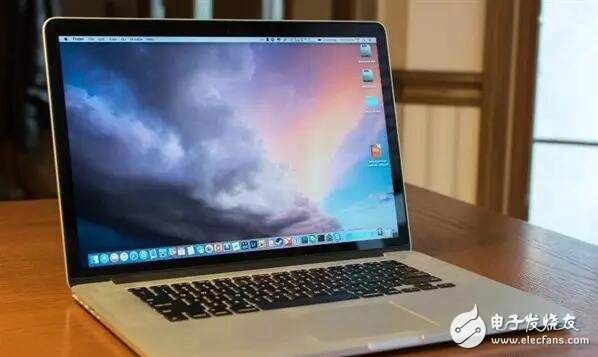According to people familiar with the matter, Apple is designing a new Mac notebook processor that can take over some of the features of Intel processors. Last year, Apple began to develop new processors. Not long ago, Apple introduced the MacBook Pro. The Touch Bar component was installed on the keyboard. Apple used the processor to control the Touch Bar. The processor being developed is similar to the processor that controls the Touch Bar. According to the source, the internal code of the upgrade component is T310, and some computers' low-energy functions can be handed over to it. The new processor was developed using ARM technology and runs concurrently with Intel processors. In the fourth quarter of last year, Apple's shipments accounted for 7.5% of the global market. Apple's development of more advanced processors for use in Mac notebooks is only a short-term goal; in the long run, Apple wants to abandon Intel and use its own processor on the Mac. Since 2010, the iPhone and iPad have been installed with Apple's own A-series processors. Last year, Apple upgraded the MacBook Pro, which installed the T1 processor, which was Apple's first ARM version of the Mac processor. The T1 processor only controls the Touch Bar and some security features. The processor opens up an "enclave" that stores payment and biometric data that is connected to the fingerprint reader. The Mac supports a low-power mode, which Apple promoted as "Power Nap" during marketing. Apple engineers are ready to move from the Mac low-power mode to the next-generation ARM chip. In low-power mode, Mac notebooks can retrieve mail, install software upgrades, and synchronize calendar information with off-screen. According to sources, the current function is running on Intel chips, which will sacrifice some power. If it is transferred to the ARM chip, it can save more power. Apple's ARM chips installed on Macs are separate and separate from other components, it is only used to control the Touch Bar. The processor being developed goes a step further and is connected to other components of the Mac system, including storage and wireless components, to have more features. Considering that the low-energy model already exists, Apple may not advertise new features. Developing its own chips makes it easy for Apple to tightly integrate hardware and software, as well as enhance control over component costs. According to sources, in notebooks and desktops, Apple has no intention of completely abandoning Intel chips in the short term. Intel has a strong design and manufacturing technology, and its processors are unmatched by competitors and contract manufacturers. If TSMC and Samsung Electronics continue to move forward and narrow the gap with Intel's factory, Apple will be able to design its own components. The ARM processor dominates the smartphone and tablet market, in part because of its low energy consumption. Five years ago, in order to improve the battery life of Apple, Apple began to find ways to get rid of Intel processors. According to sources, Apple will upgrade its MacBook Pro by the end of this year, and new chips may be installed.
There are many different versions of DIN Connectors. The name of each type comes from the number of pins the connector has (3-pin DIN, 4-pin DIN, etc.) Some of these pin numbers come in different configurations, with the pins arranged differently from one configuration to the next.
DIN cable connector 3-pin, 4-pin, 5-pin, 6-pin, 7-pin, 8-pin degree 180, 216, 240, 262, 270
DIN cables, DIN connector, telephone cable, computer cable, audio cable ETOP WIREHARNESS LIMITED , https://www.oemmoldedcables.com